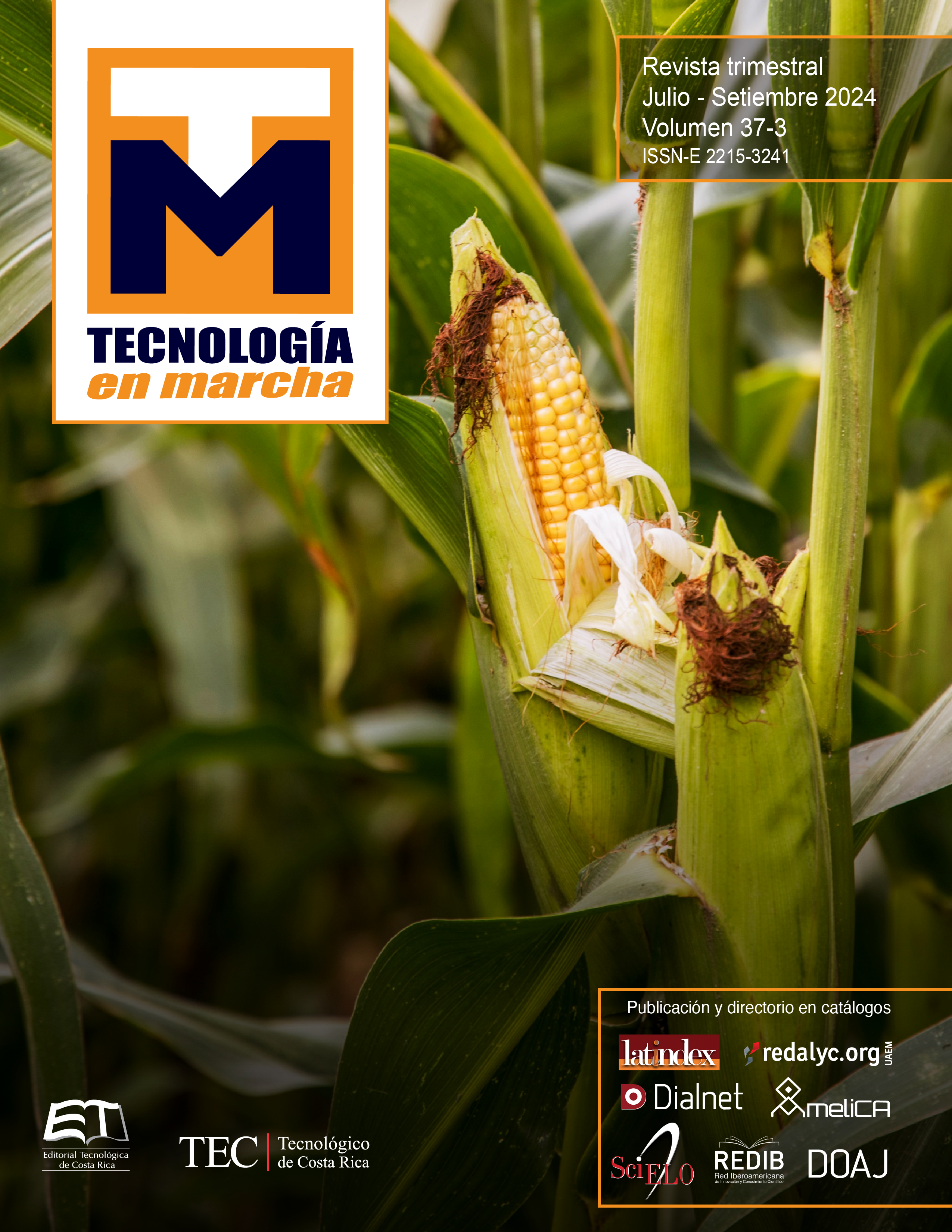Geospatial characterization of road infrastructure through Machine Learning in the district of San Isidro de El General
Main Article Content
Abstract
The proposal to get to know the estimated value of the road network of Pérez Zeledón will be to divide the roads by homogeneous zones, these present different prices per square meter; in addition, from the survey of some roads, estimation of quantities of materials with projects carried out in these zones. An approximate value of the road network of the district of San Isidro de El General is provided for the cost per square meter of road surfaces, linear meter of drainage system and square meter of sidewalks. Thus, the idea of creating a model integrated to QGis and determine these variables is concretized. Steps to complete the methodology: Data mining: the largest amount of information is extracted to integrate into the model, review of physical files of the roads, obtaining relevant layers of the network through the departments of Cadastre and Road Management in the Municipality of Perez Zeledon, geographic information from SNIT as hydrological layers, homogeneous zones and orthophotos. Then, to classify the results, supervised classification is performed to the spectrum of analysis (materials). Once the data is accommodated, the unsupervised classification by means of clustering algorithms, vector and raster tools, API complements integrated to the system, also as advanced digitizing or different geoprocesses of a GIS that optimally adjust the characteristics of the road network. These parameters are adapted to the models found in the budget bases and accurate estimates are established. The network is evaluated and its parametric estimation is concluded.
Article Details

This work is licensed under a Creative Commons Attribution-NonCommercial-NoDerivatives 4.0 International License.
Los autores conservan los derechos de autor y ceden a la revista el derecho de la primera publicación y pueda editarlo, reproducirlo, distribuirlo, exhibirlo y comunicarlo en el país y en el extranjero mediante medios impresos y electrónicos. Asimismo, asumen el compromiso sobre cualquier litigio o reclamación relacionada con derechos de propiedad intelectual, exonerando de responsabilidad a la Editorial Tecnológica de Costa Rica. Además, se establece que los autores pueden realizar otros acuerdos contractuales independientes y adicionales para la distribución no exclusiva de la versión del artículo publicado en esta revista (p. ej., incluirlo en un repositorio institucional o publicarlo en un libro) siempre que indiquen claramente que el trabajo se publicó por primera vez en esta revista.
References
Humacata, L. (2020). Sistemas de Información Geográfica, Aplicaciones para el análisis de clasificaión espacial y cambios de uso de suelos. Impresiones Buenos Aires.
MOPT. (2014). Manual de especificaciones técnicas para realizar el inventario y evaluación de la Red Vial Cantonal (Decreto No. 38578-MOPT- 21-10-2014). San José: Gaceta.
Hird, J., DeLancey, E., McDermid, G., & Kariyeva, J. (2017). Google Earth Engine, datos satelitales de acceso abierto y aprendizaje automático en apoyo del mapeo probabilístico de humedales de área grande. MDPI Remote Sensing, 9-1315.
Paul Mather, B. T. (2009). Métodos de clasificación para datos de detección remota. En B. T. Paul Mather, Métodos de clasificación para datos de detección remota (págs. 54-74). New York: Taylor y Francis Group.
Castañeda, R. A. (2021). Implementación del método máquinas de soporte vectorial en bases de datos espaciales para análisis de clasificación supervisada en imágenes de sensores remotos. Revista Cartográfica, 2-6.
Frank, I. N. (2017). Teoría-Teledetección Espacial. Geomática Ambiental S.R.L.
Eyco, L. (22 de Marzo de 2021). ¿Por qué es tan importante el Índice de Reflectancia Solar (SRI) para la construcción y cómo se mide? https://www.laboratorioseyco.com/por-que-es-importante-el-indice-de-reflectancia-solar-en-la-construccion/#queesreflactanciasolar
Basemaps, M. I. (07 de 2020). Maxar.com.
https://resources.maxar.com/imagery-basemaps
Congelo, L. (2017). Semiautomatic classification manual-v5. Obtenido de Semiautomatic classification manual-v5: https://semiautomaticclassificationmanual-v5.readthedocs.io/es/latest/remote_sensing.html
Buzai, G. D. (2011). Geografía y Sistemas de Información Geográfica. Evolución Teórico Metodológica Hacia Campos Emergentes. Revista Geográfica de América Central, 2(48E), 15-67.
Lythe, M. (2020). Automating land classification with machine learning. https://www.lynker-analytics.com/theblog/2020/4/24/automating-land-classification-with-machine-learning
NASA Programa de capacitación en ciencias aplicadas. (22 de Octubre de 2015). ARSET Fundamentos de la teledetección.
Fundamentals of Remote Sensing: https://appliedsciences.nasa.gov/sites/default/files/Fundamentals_RS_Session2_Land_Final.pdf
Mishra, S. (2017). Aprendizaje no supervisado y agrupación de datos. Towards Data Science.
https://towardsdatascience.com/unsupervised-learning-and-data-clustering-eeecb78b422a
Google Motor de Tierra. (28 de 10 de 2020c). Supervised Classification. https://developers.google.com/earth-engine/guides/classification
Google Motor de Tierra. (20 de 10 de 2020b). Unsupervised Classification (clustering). https://developers.google.com/earth-engine/guides/clustering
Vásquez Varela, L. R. (2002). Indice de condición del pavimento (PCI) PARA PAVIMENTOS ASFÁLTICOS Y DE CONCRETO HIDRÁULICO EN CARRETERAS.
Manizales: ingepav.
Ministerio de Obras Públicas y Transportes. (2013). TERMINOS DE REFERENCIA TECNICOS PARA ESTUDIOS HIDROLOGICOS E HIDRAULICOS PARA PUENTES. tr-hidrologicos-hidraulicos.pdf.

